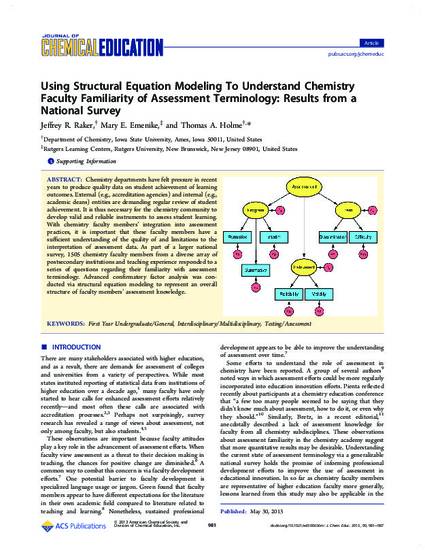
Chemistry departments have felt pressure in recent years to produce quality data on student achievement of learning outcomes. External (e.g., accreditation agencies) and internal (e.g., academic deans) entities are demanding regular review of student achievement. It is thus necessary for the chemistry community to develop valid and reliable instruments to assess student learning. With chemistry faculty members’ integration into assessment practices, it is important that these faculty members have a sufficient understanding of the quality of and limitations to the interpretation of assessment data. As part of a larger national survey, 1505 chemistry faculty members from a diverse array of postsecondary institutions and teaching experience responded to a series of questions regarding their familiarity with assessment terminology. Advanced confirmatory factor analysis was conducted via structural equation modeling to represent an overall structure of faculty members’ assessment knowledge.
Available at: http://works.bepress.com/thomas_holme/15/

Reprinted (adapted) with permission from J. Chem. Educ., 2013, 90 (8), pp 981–987. Copyright 2013 American Chemical Society.